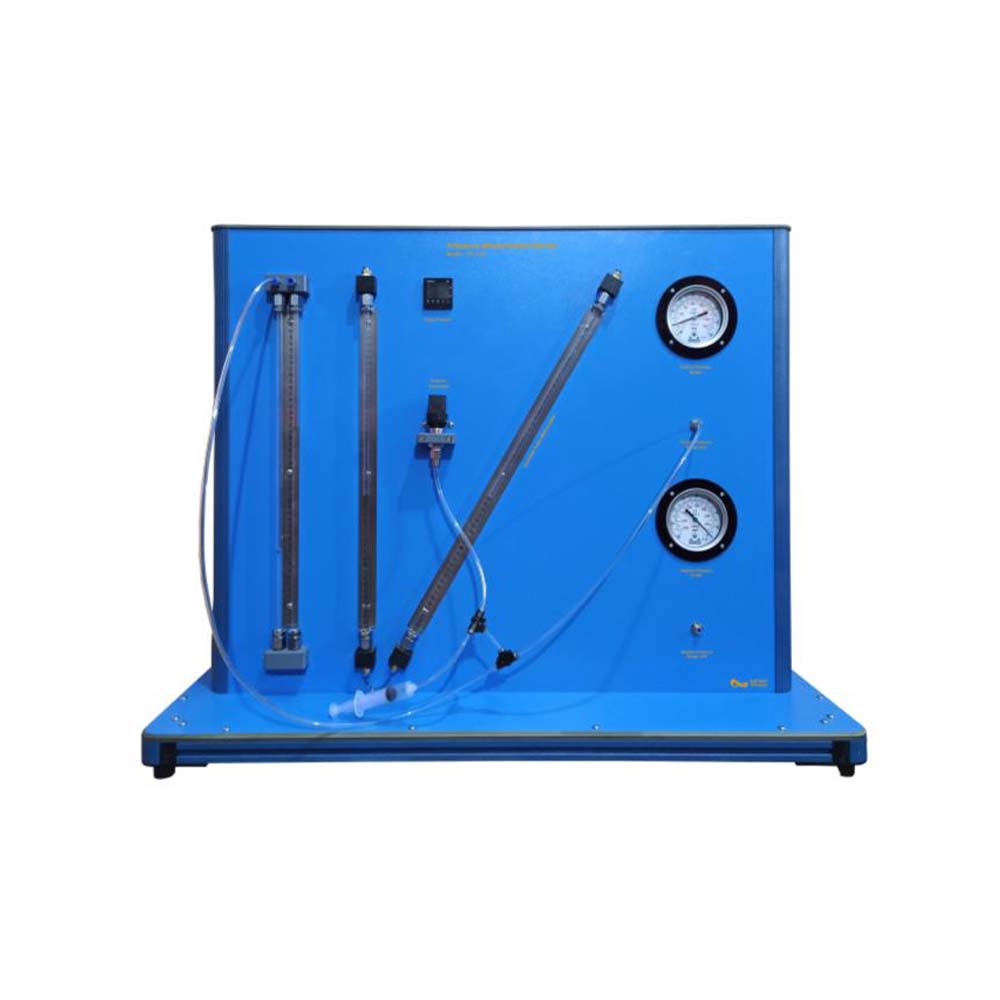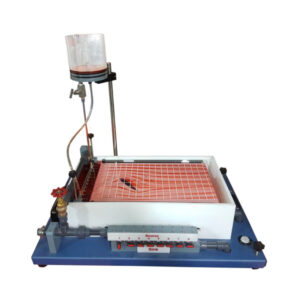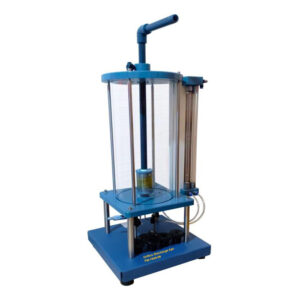The manometer panel contains 2 tubes, 2 dial manometers, and one pressure transducer for the demonstration of alternative measurement methods. Test pressures in the millibar range are generated with the aid of the supplied syringe and or hand pump. All manometers can be combined with one another using connecting hoses. It is possible to measure gauge pressure and vacuum. The unit is also supplied for detecting deviations in a measuring instrument compared to a reference instrument or universally accepted standard value. This observed deviation is taken into account in the subsequent use of the calibrated measuring instrument and adjusted if necessary. A dead Weight Pressure Calibrator is a device designed as an introduction to the basics of checking and calibrating a manometer. Dead Weight Pressure Calibrator apparatus consists of a precision machined piston and cylinder assembly mounted on leveling screws. A Bourdon gauge is supplied for calibration. A defined force is applied by loading the piston with dead weights. The ratio of force/piston cross-sectional area results in a defined test pressure. Hydraulic oil is used to transfer the force. If the pressure in the system rises, the force acts against the spring of the Bourdon tube pressure gauge. The test pressure that is produced can be read on the manometer’s dial. Loading the calibrated piston manometer with weights produces a very accurate, reproducible calibration pressure, which can be used to check and calibrate the manometer. The weights supplied are added to the upper end of the piston rod which is rotated to minimize friction effects. The gauge is thus subject to known pressures which may be compared with the gauge readings and an error curve drawn. Dial and Bourdon tube manometers can be calibrated with a dead-weight piston gauge.
Experiments
- Familiarization with different pressure measurement methods.
- The function of a Bourdon tube manometer.
- Pressure measurement with U-tube and Bourdon tube manometers.
- Calibration of mechanical manometers.
Specifications
- Measuring devices for pressure and vacuum.
- U-tube and inclined tube manometers.
- Bourdon tube manometer, pressure above atmospheric.
- Bourdon tube manometer, pressure below atmospheric.
- A plastic syringe generates test pressures in the millibar range.




